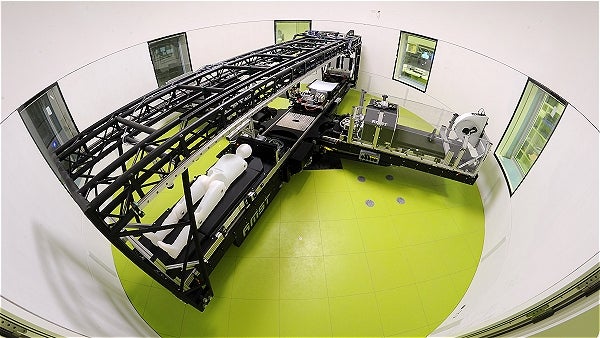NASA offers volunteers £14,000 to stay in bed for two months
The beds will be angled downwards towards the head end by six degrees
If you thought you required a steady stomach and a degree in physical science to work with NASA, think again.
NASA is currently offer volunteers £14,000 (€16,500) for the opportunity to lie in bed for two months to help them understand how artificial gravity can affect the human body.
The AGBRESA (Artificial Gravity Bed Rest Study) was launched this week by NASA in cooperation with the European Space Agency (ESA) at the German Aerospace Centre (DLR).
The study marks the first time scientists will investigate the use of artificial gravity as a possible means of preventing the negative effects of weightlessness (the absence of gravity) on the human body.
Researchers are looking for 12 female and 12 male volunteers, aged between 24 and 55 to spend 60 days in the beds. All volunteers must speak German.
The beds will be located in :envihab, a medical research facility of the Institute of Aerospace Medicine of the German Aerospace Centre in Cologne.
All experiments, meals, and leisure activities will take place lying down during the bed-rest phases.

The participants will remain at the facility for a total of 89 days, including five days of familiarisation and 14 days of rest and astronaut rehabilitation either side of the 60-day bed-rest phase.
During the study, the volunteers will be restricted in their movements to ensure any strain on muscles, tendons and the skeletal system is reduced.
The beds will be angled downwards towards the head end by six degrees in order to simulate the displacement of bodily fluids experienced by astronauts in a space shuttle.
Half the participants will undergo testing similar to that of an artificial gravity chamber. The testing will involve them being spun around in a centrifuge (a machine with a rapidly rotating container that applies centrifugal force) at 30 revolutions a minute with the aim it will force blood back into their extremities.
Throughout the test, scientists will test volunteers on their cognitive abilities, muscle strength, balance, and cardiovascular function.

By comparing the physical deterioration of the two groups, the researchers hope to see data that will help mitigate this effect experienced by astronauts during long-term space travel.
Leticia Vega, Associate Chief Scientist for International Collaborations for NASA’s Human Research Program, explains: "Both effects are similar to what astronauts experience in space.
“Although the effects of weightlessness are primarily investigated on the International Space Station, analogues such as :envihab are helpful when studying certain research topics under controlled conditions on Earth. These findings will later be validated on the ISS."

Jennifer Ngo-Anh, Team Leader in Human and Robotic Exploration at ESA, adds that the study allows the researchers to “address the issue of muscular atrophy caused by weightlessness” as well as other stresses including cosmic radiation, isolation, spatial restrictions.
The AGBRESA study will feature two campaigns, with the first batch of test participants having arrived on 25 March followed by a second campaign in early September.
Applications for the autumn cohort close on 24 May. If you would like to take part in the test, email probanden-bit@dlr.de.
Join our commenting forum
Join thought-provoking conversations, follow other Independent readers and see their replies
Comments
Bookmark popover
Removed from bookmarks